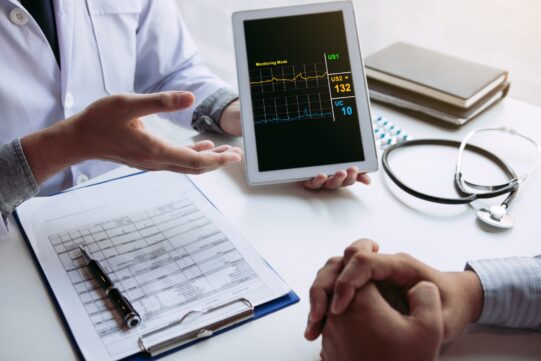Reliably transmitting biometrics via remote patient monitoring devices is critical for administering quality telehealth care and improving patient outcomes.
The need for telehealth services has been substantial and rapidly growing in the United States. Patients wait an average of nearly one month to see their physician, whose accessibility is growing increasingly scarce. And that’s for areas where facilities are ample. It’s little wonder that from 2010-2017, the use of telehealth in hospitals has grown from 35% to 76%, with nearly every state Medicaid program covering various aspects of telehealth services.
That was before COVID-19. The onset of the global pandemic has prompted a surge in telehealth services, as most states restricted in-person visits for all but the most acute medical events.
“For years, telehealth has been considered the future of medicine – it just never became the present. Then, as the COVID-19 pandemic shut down doctors’ offices and clinics across the country, telemedicine suddenly became the only way patients could see their doctors and vice versa,” according to a USA Today article. “Telehealth use surged from 8% of Americans in December to 29% in May as primary care and mental health physicians and specialists turned to remote care out of necessity during the COVID-19 pandemic.”
Equally as important as the implementation of telehealth is a reliable platform for monitoring vital patient biometrics. While video captures visual signs of illness and stress, real-time monitoring of vital signs — blood pressure, oxygen saturation, air capacity, etc. — can transform telehealth from a stopgap measure to a long-term, viable healthcare solution.
It was with this in mind that we created our portfolio of remote patient monitoring (RPM) solutions, a collection of biometric devices that interface remotely with medical professionals to provide the seamless delivery of medical care.
By themselves, our RPM devices are robust and versatile, measuring critical vital signs. But when used in conjunction with the included digital tablet equipped with telehealth capabilities, the full value of our kits is unleashed, allowing the unfiltered transmission of essential health data to medical professionals.
The result is far more than the value of either RPM or telehealth. Rather, our RPM kits offer a robust, fully integrated healthcare solution that allows for the seamless administration of medical care.
That’s enhanced telehealth, a proactive approach to healthcare management that offers profound benefits for the future delivery of medical care. And it’s an approach that promises to endure long after the public health threat of COVID-19 has receded.
Recognizing the value that telehealth has played during COVID-19 and its application to future medical treatments, 30 senators in June wrote a letter to Senate majority leader Mitch McConnell seeking to permanently expand patient access to telehealth services for Medicare beneficiaries even after COVID-19 has ended. “Doing so would assure patients that their care will not be interrupted when the pandemic ends. It would also provide certainty to health care providers that the costs to prepare for and use telehealth would be a sound long-term investment,” McConnell wrote in the letter.
Telehealth will continue to play a prominent role in our healthcare industry, and we are committed to further facilitating its adoption. Our RemetricHealth RPM solutions offer physician groups, hospitals, home health agencies, and payers a more reliable way to monitor and assess patient biometrics, fostering better decision making and improved patient outcomes.
Schedule a meeting with us to learn more today.
